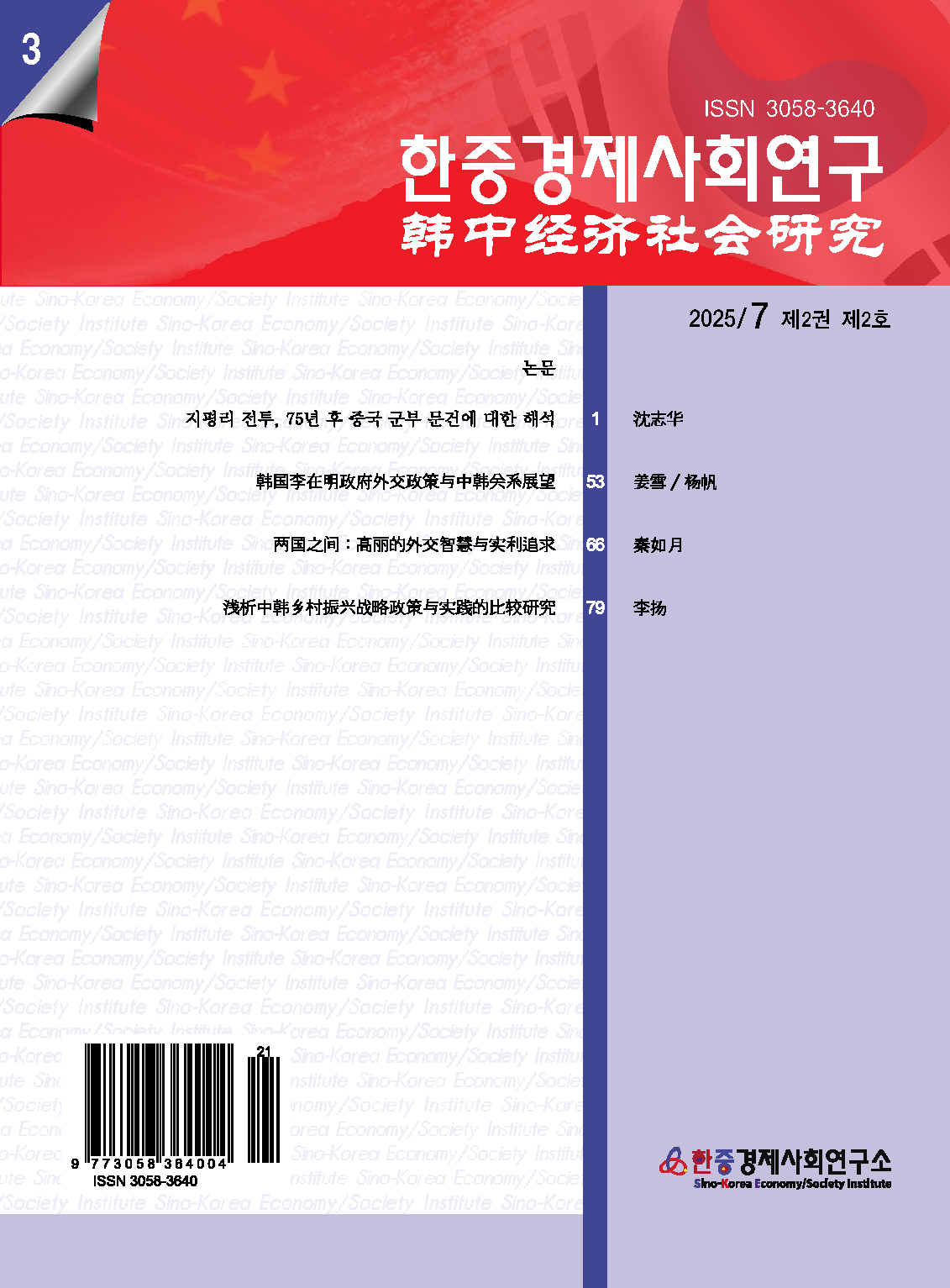학술논문
两强之间:高丽的外交智慧与实利追求
이용수 57
- 영문명
- Between Two Hegemons: Goryeo’s Diplomatic Acumen and Pragmatic Pursuit of Strategic Interests
- 발행기관
- 한중경제사회연구소
- 저자명
- 秦如月
- 간행물 정보
- 『한중경제사회연구』제2권 제2호, 66~78쪽, 전체 13쪽
- 주제분류
- 인문학 > 기타인문학
- 파일형태
- 발행일자
- 2025.07.31
4,360원
구매일시로부터 72시간 이내에 다운로드 가능합니다.
이 학술논문 정보는 (주)교보문고와 각 발행기관 사이에 저작물 이용 계약이 체결된 것으로, 교보문고를 통해 제공되고 있습니다.

국문 초록
在宋朝建立以前,辽已凭借灭渤海、据燕云,确立了其在东北亚地区的实质性霸主地位。然而,高丽由于建国初期即确立“北进政策”与“思慕华风”的“小中华”思想,在地缘利益与文化认同两方面均与辽存在结构性矛盾。一方面,高丽不断在边境与辽发生摩擦,另一方面又坚信辽为“夷”、不具“华夏”正统地位。在此背景下,宋朝的建立为高丽提供了文化认同与政治盟友的可能。宋与高丽均秉持“华夷秩序”理念,迅速展开朝贡与往来。然而,随着“高梁河之战”与“雍熙北伐”两次惨败,宋朝不得不转为守势,短期内放弃收复燕云的计划;相对地,连战连胜的辽朝信心高涨,态度更趋强硬。
辽宋对峙本质上是中世纪中国内部的地缘政治重组,二者共享同一文明体系。但是这种两强局面使这一时期的东北亚形成了复杂的身份与权力错位格局:辽虽为事实上的军事强权,却难以获得“华夏”认可;宋虽失利,却仍是华夷秩序的正统象征。高丽则处于这两种“霸权”之间的战略夹缝,一方面受制于现实的安全压力,另一方面又不愿轻易舍弃对华文化的归属情感。在这种地缘与观念双重两难中,高丽并未被动受制,而是灵活运用外交手段,在辽宋之间斡旋腾挪,既避免了全面卷入,也巧妙争取到了包括边疆主权、对外主动权等在内的实质性国家利益。
高丽在第一次辽丽冲突前后的战略选择,不仅体现出一个中型国家在多极格局下的高度外交智慧,也为当代类似处境中的国家提供了重要的历史借鉴。
영문 초록
Before the establishment of the Song dynasty(960–1279), the Liao dynasty(907–1125) had already solidified its de facto hegemony in Northeast Asia by conquering Balhae(926) and seizing the strategic Sixteen Prefectures(Yan-Yun region, 936). However, Goryeo(918–1392), which had adopted a "Northern Expansion Policy"(北進政策,북진정책) and embraced a "Little China"(小中華,소중화) ideology rooted in Sinocentric civilizational identity, found itself in structural conflict with Liao—both geopolitically and culturally. While engaging in recurrent border disputes with Liao, Goryeo’s elite persistently rejected Liao’s legitimacy within the Confucian civilizational orthodoxy(華夏,화하) order, viewing it as a "barbarian" (夷,이적 / 오랑캐) regime.
The rise of the Song dynasty offered Goryeo a potential civilizational ally and strategic counterbalance. Both states upheld the Hua-Yi(華夷) hierarchy, leading to rapid diplomatic and tributary exchanges. However, after suffering decisive defeats at the Battle of Gaoliang River(979) and during the Yongxi Northern Expeditions(986), the Song shifted to a defensive posture, temporarily abandoning its claims to the Yan-Yun region. Meanwhile, the militarily triumphant Liao adopted an increasingly assertive stance.
The Liao-Song confrontation was, in essence, a geopolitical realignment within medieval China, as both dynasties operated within the same civilizational framework. But this period witnessed a unique geopolitical paradox in Northeast Asia: while Liao dominated militarily, it remained culturally marginalized within the Sinocentric order, whereas the Song, despite its weakened military position, retained its symbolic centrality in Confucian civilizational legitimacy. Caught between these competing hegemonies, Goryeo adeptly pursued a strategy of flexible diplomacy—avoiding full alignment with either power while securing tangible benefits such as border stability and foreign policy autonomy.
Goryeo’s strategic maneuvering during the First Liao-Goryeo War(993–994) exemplifies middle-power statecraft in a multipolar regional system. This historical case provides valuable insights for contemporary international relations, particularly regarding how secondary states navigate great-power competition while preserving their civilizational identity and strategic autonomy.
목차
1. 早期高丽与辽、宋关系
2. 第一次辽丽冲突与高丽的外交智慧
3. 中韩合作与区域发展的机遇
키워드
참고문헌
관련논문
인문학 > 기타인문학분야 BEST
더보기인문학 > 기타인문학분야 NEW
- 차이, 어포던스(affordance), 조응 : 장애/장애인과 함께 살아가기
- 저항의 장으로서 정신질환 서사의 재조명 : 정신건강 회복을 중심으로
- 정신장애와 공존의 사회학 : ‘지하철 빌런’과 지하철 같이 타기
최근 이용한 논문
교보eBook 첫 방문을 환영 합니다!

신규가입 혜택 지급이 완료 되었습니다.
바로 사용 가능한 교보e캐시 1,000원 (유효기간 7일)
지금 바로 교보eBook의 다양한 콘텐츠를 이용해 보세요!



